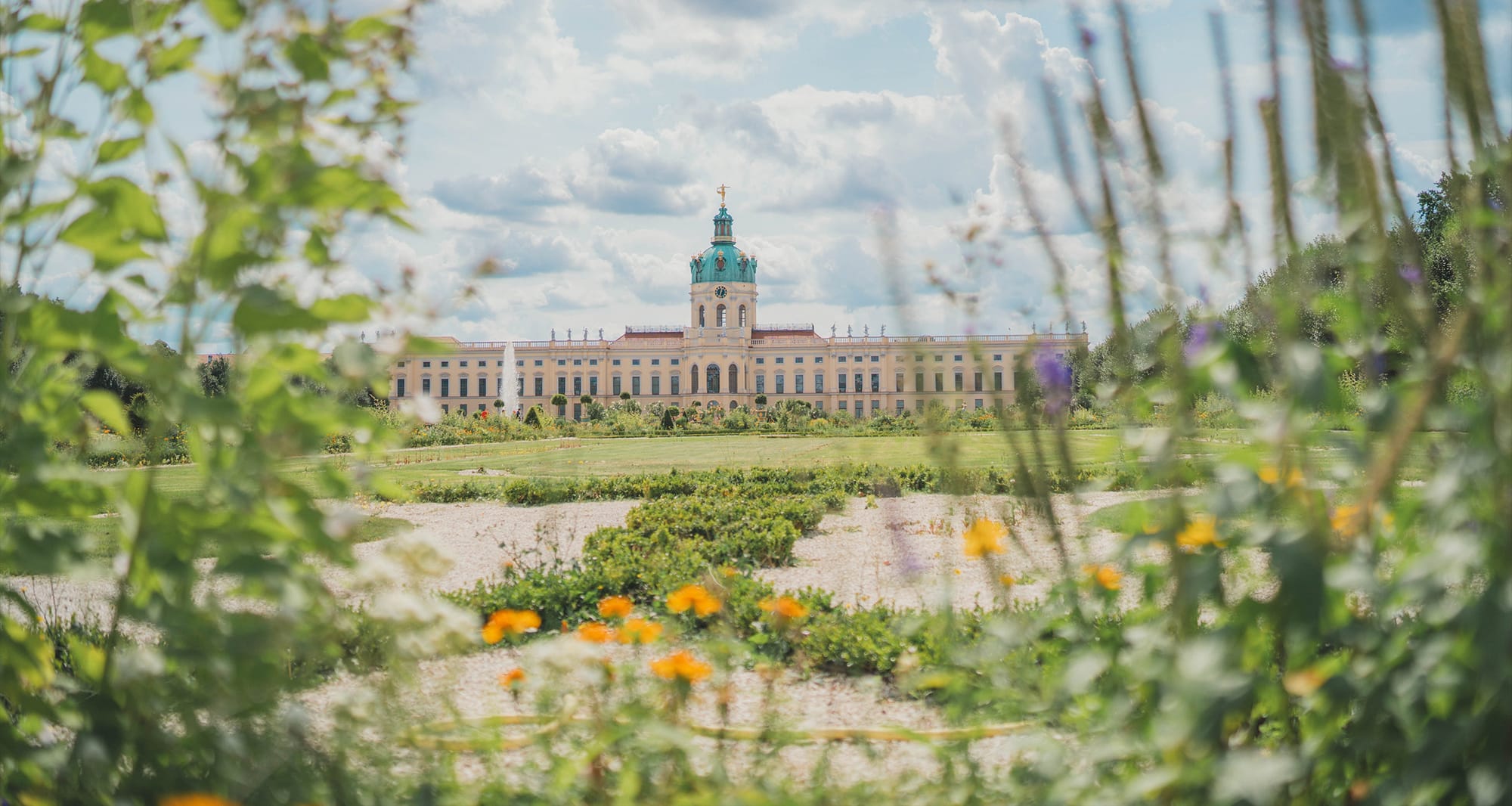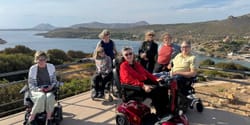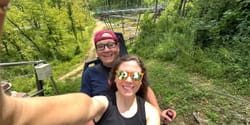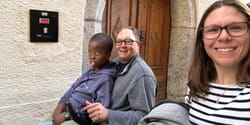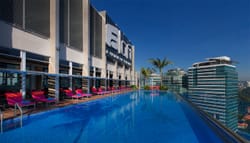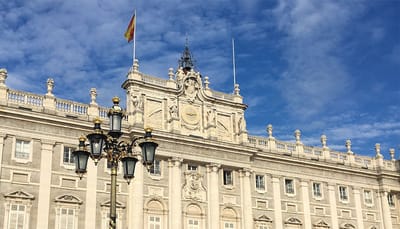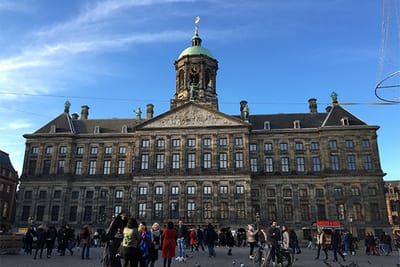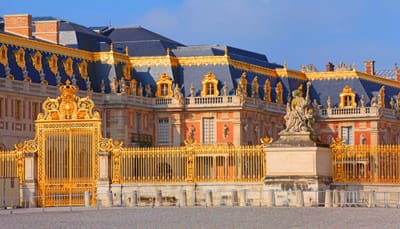Built in the 17th century, Schloss Charlottenburg was the home to 7 Prussian kings of the Hohenzollern Dynasty. Originally named Lietzenburg, the palace was renamed to honor the wife of King Friedrich I, Sophie Charlotte, after her death in 1705. Over the next two centuries, six other kings would inhabit the palace, each contributing to its continued expansion. The once pedestrian baroque-style building evolved into the largest palace in Berlin, with multiple wings and a sprawling outdoor park.
Today, Charlottenburg Palace is one of the most popular tourist attractions in the city. Earlier this month, I visited the palace to gauge its level of wheelchair accessibility. This is my report.
Location, What to Expect
I technically visited on one of the last days of spring, but it was toasty, so I’m calling it summer. 😉 The sky was clear, sun was shining, and it was one of the most beautiful days of weather I have seen anywhere in my lifetime. My pictures will (hopefully) illustrate that.
Schloss Charlottenburg is located outside of the city center. The most easily accessible S+U-Bahn station is Zoologischer Garten, served by the U1, U2, U9, S5, S7 and many city bus routes. From this station, you’ll need to hop on the M45 bus. It will be a 15-minute, 3 kilometer ride. It’s not a bad idea to pair a trip to the palace with a visit to the zoo.
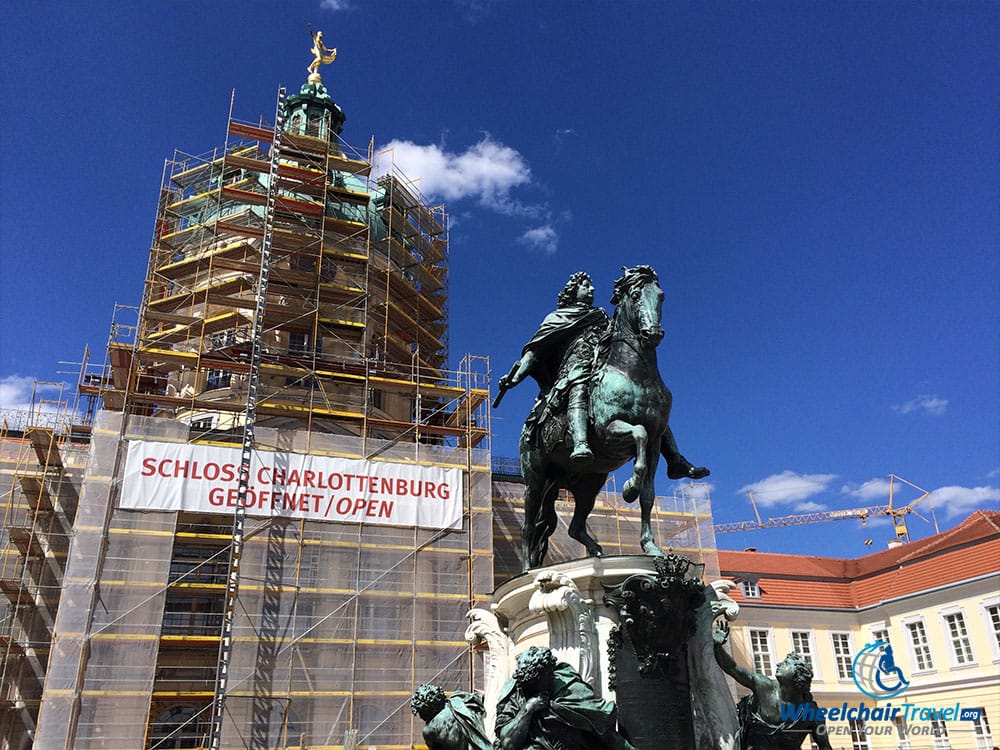
The palace is presently under construction, with the cupola and main entrance covered in scaffolding. The incredible statue of Friedrich Wilhelm I still stands proudly at the center of the outer courtyard. If you are a wheelchair user, I recommend avoiding the extremely rough cobblestones and this courtyard altogether – unless you want a cool photo like the one above.
The main entrance is not accessible. In fact, the vast majority of the palace interior (including the entire 2nd floor) cannot accommodate a wheelchair. Instead, wheelchair users must enter through the gift shop/exit to the right of the main courtyard. You’ll be able to tour about 10 rooms on the ground floor. If complimentary admission is not offered to you, ask for it – you should not be charged if visiting in a wheelchair. Let’s head inside…
Wheelchair Accessible Interior Rooms
Once you’ve entered the palace building and gift shop, you’ll want to turn left and roll all the way to the end of the wing (which is actually the center of the building). Use the audio guide to hear commentary on the different rooms and their significance. While some of the paintings and furniture pieces are original and date to the 17th and 18th centuries, many have been lost over time. The Second World War also caused significant damage and destruction.
Here are a few photos from some of my favorite interior rooms – all wheelchair accessible and on the ground floor.
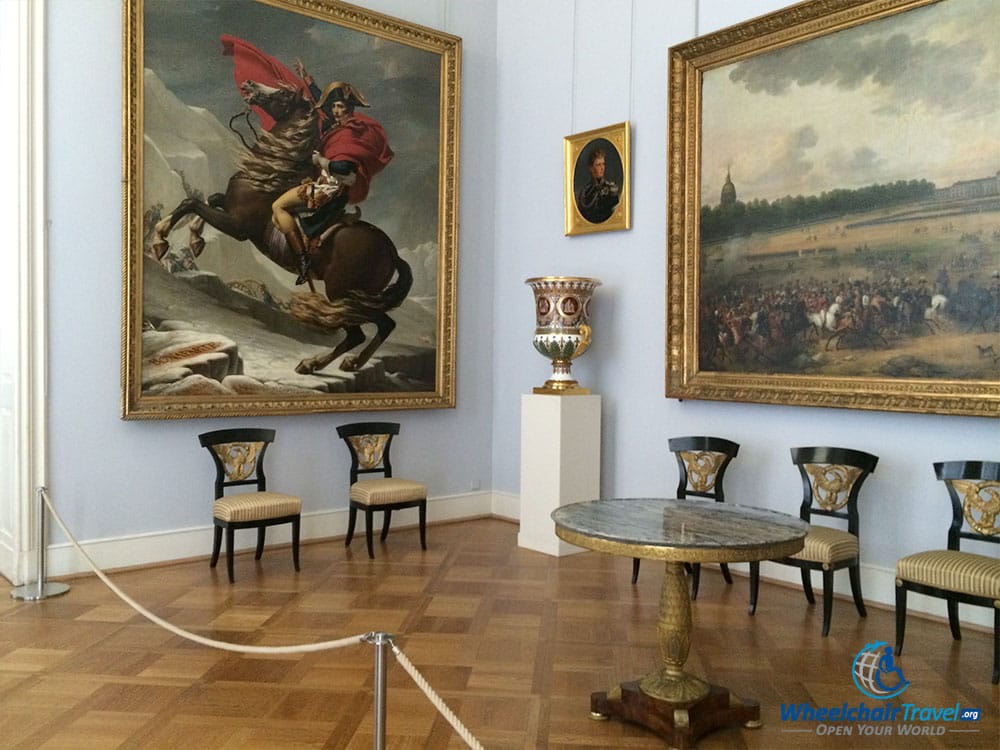
Talk about leaving a legacy… portraits and paintings of Napoleon hang in castles and palaces in every country of Europe.
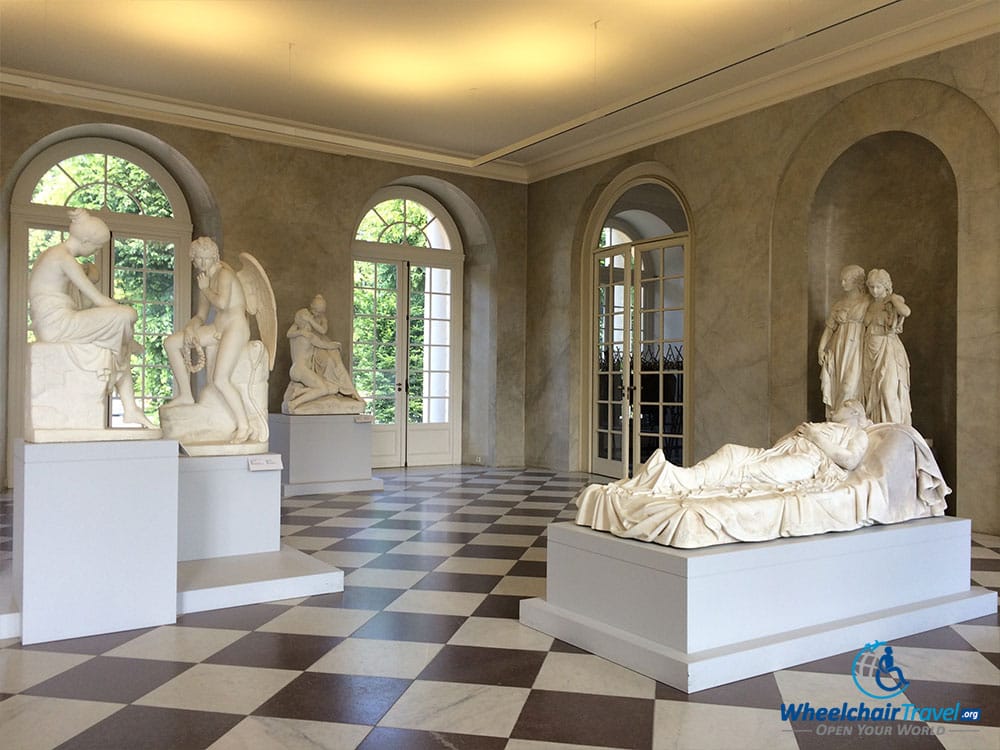
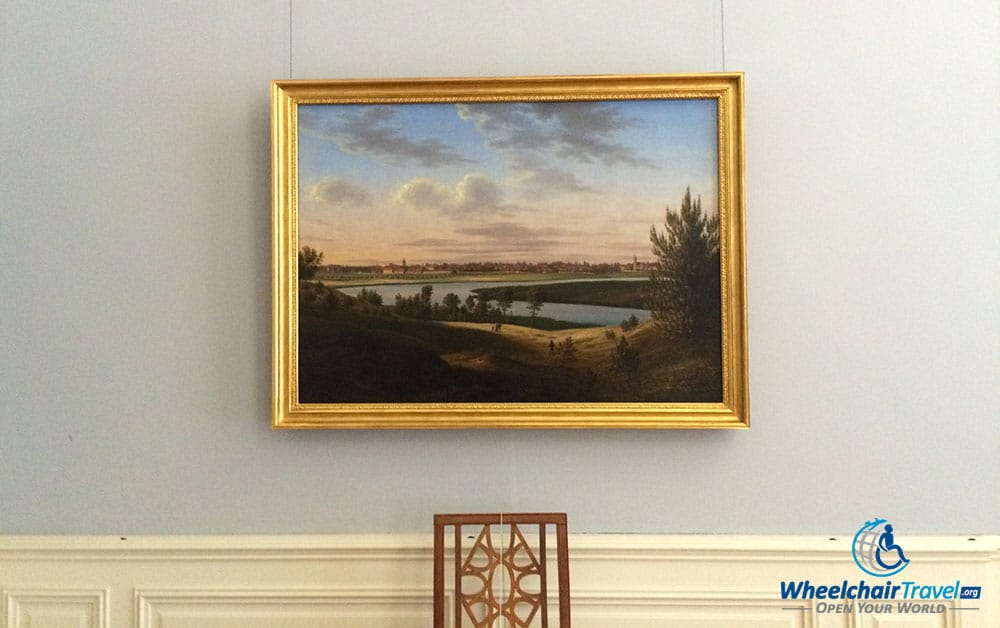
This is one of the most beautiful paintings (in my opinion) hanging in the small area of Charlottenburg Palace that I could access. View of Charlottenburg from Wilmersdorf was painted in 1828 by Wilhelm Barth. This terrible photograph does not do the painting justice. The painting had such depth, but was also soft and inviting. I loved it.
Park and Gardens
The park behind Charlottenburg Place is free and open to the public. Although you will not find ornate gardens like those at Chateau Versailles, the space is a nice retreat from the bustling city. It is compact, but not cramped.
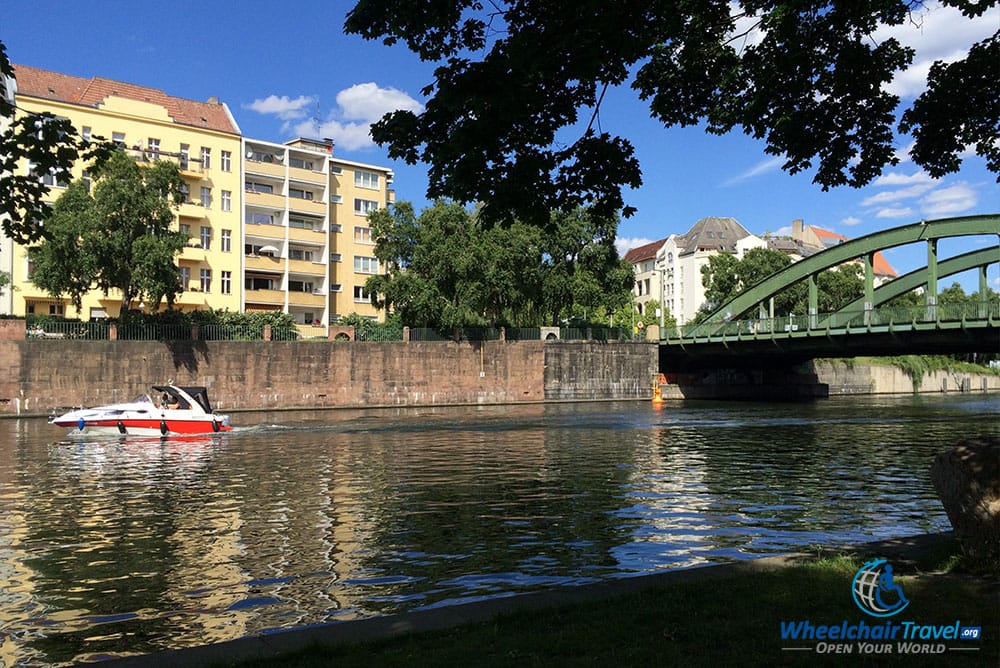
It didn’t take long for me to encounter beauty. Berlin has grown right up to the walls of the palace, and one of the park’s borders is the Spree River. At the spot pictured above, I thought about the turning tides of history in Germany. I was, after all, inside a royal palace that was closed to the public just a century ago.
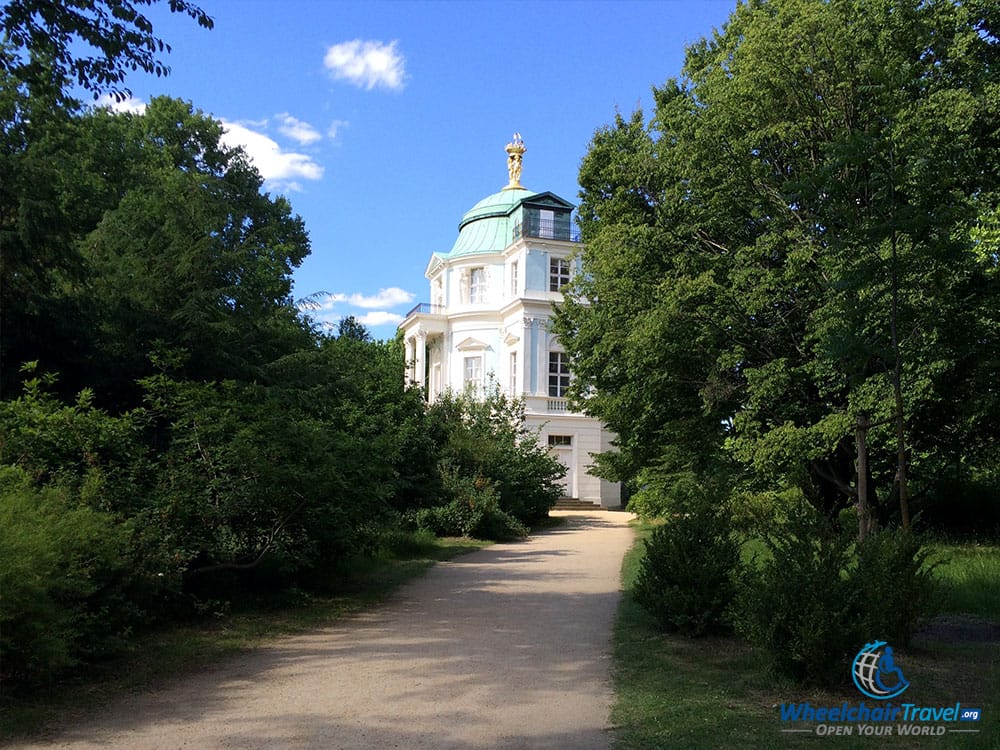
The pathways through the park are composed of dirt and small rocks. Firm and wheelchair accessible, I was able to roll the entire park without issue. The photo above contains the path leading to the belvedere at the back of the park. A belvedere is a structure which is built to take advantage of a spectacular view. Steps prevent wheelchair access to this building.
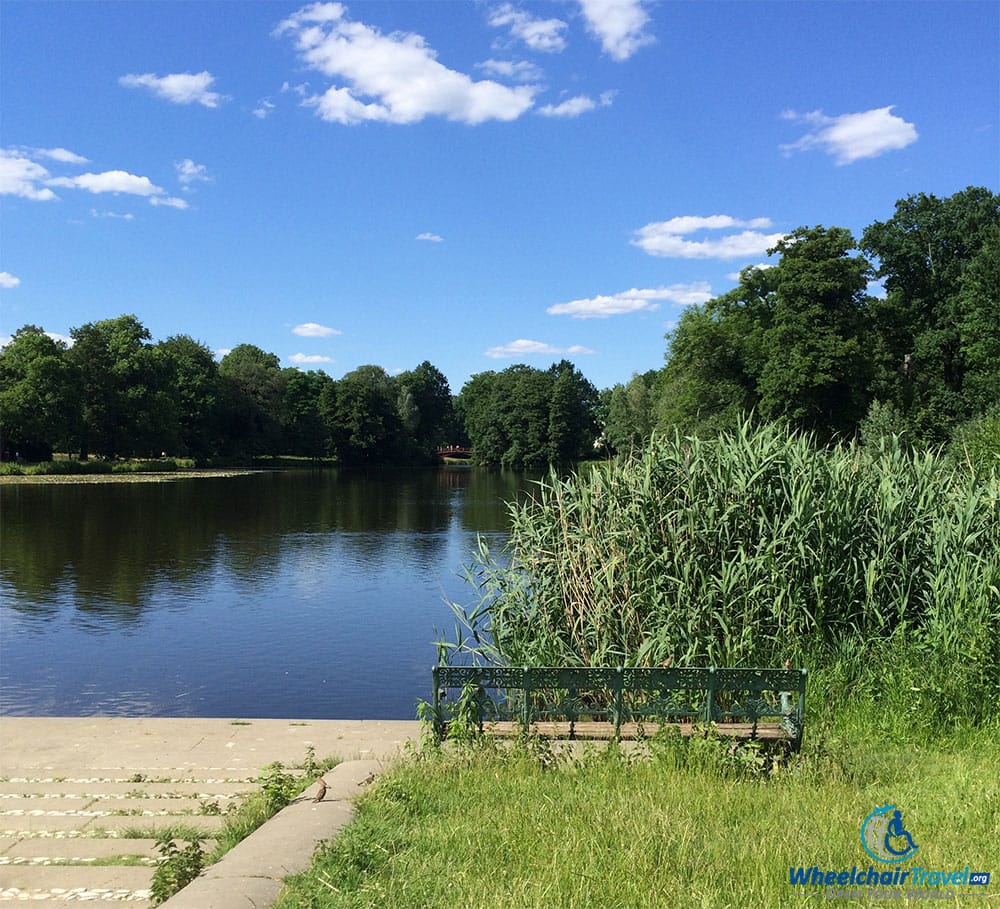
The lake at the center of the palace grounds is connected to the Spree River. One of my favorite spots in the park is pictured above. A beautiful bench, surrounded by grass and weeds, sits in front of the lake. Here, the lakefront is at the bottom of 15 or more steps, making it inaccessible. An accessible path to the waterfront can be found on the lake’s west side.
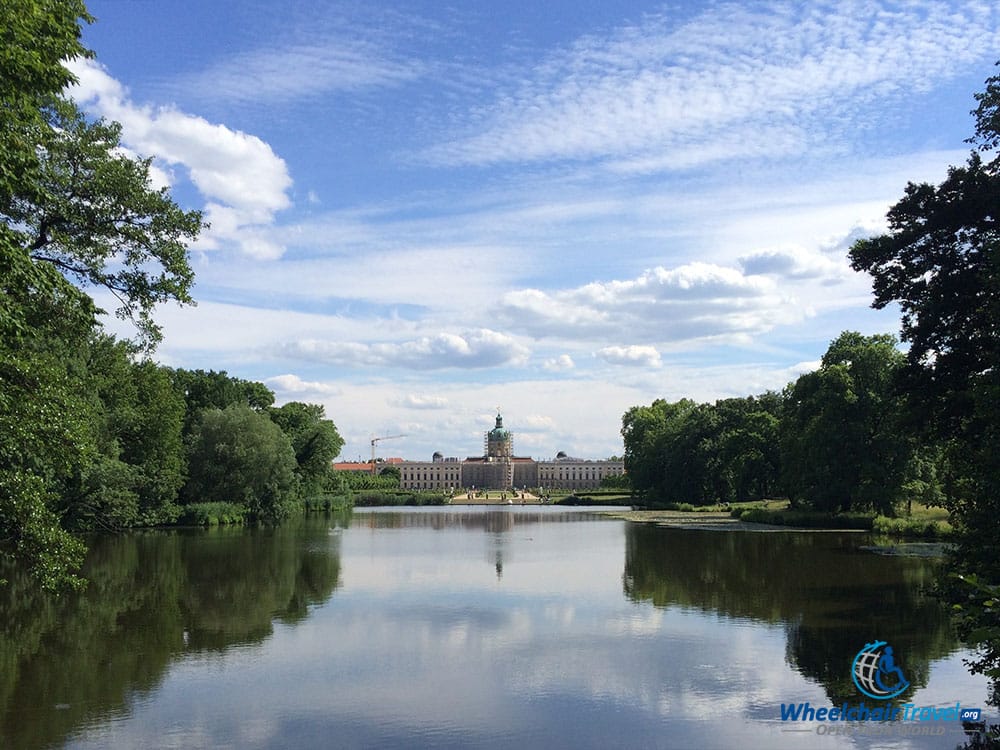
I needed my higher-quality camera at Charlottenburg, because the picture above fails to capture the beauty I witnessed. This photo was taken across the lake from the bench (and palace building). Reflections of the clouded sky danced across ripples in the lake. The warm kiss of the sun and a gentle breeze sent me into a state of total relaxation and happiness. It was briefly magical.
Final Thoughts
I have to admit, I was disappointed that so little of the palace interior was wheelchair accessible. I was left wanting after seeing only a handful of rooms in what was the home to 7 kings. At the least, the entire ground floor should be accessible but, I digress.
The outdoor park, its accessibility and immense beauty reversed my mood – quickly. A day that started out with frustration and disappointment ended with a leisurely roll through a beautiful setting.
Reflecting on the entire experience, I highly recommend a visit to Schloss Charlottenburg. You can spend 30-45 minutes in the limited palace space (if you are a read and listen to everything type), then follow that up with a visit to the park. I’m confident that you will not regret the decision!

